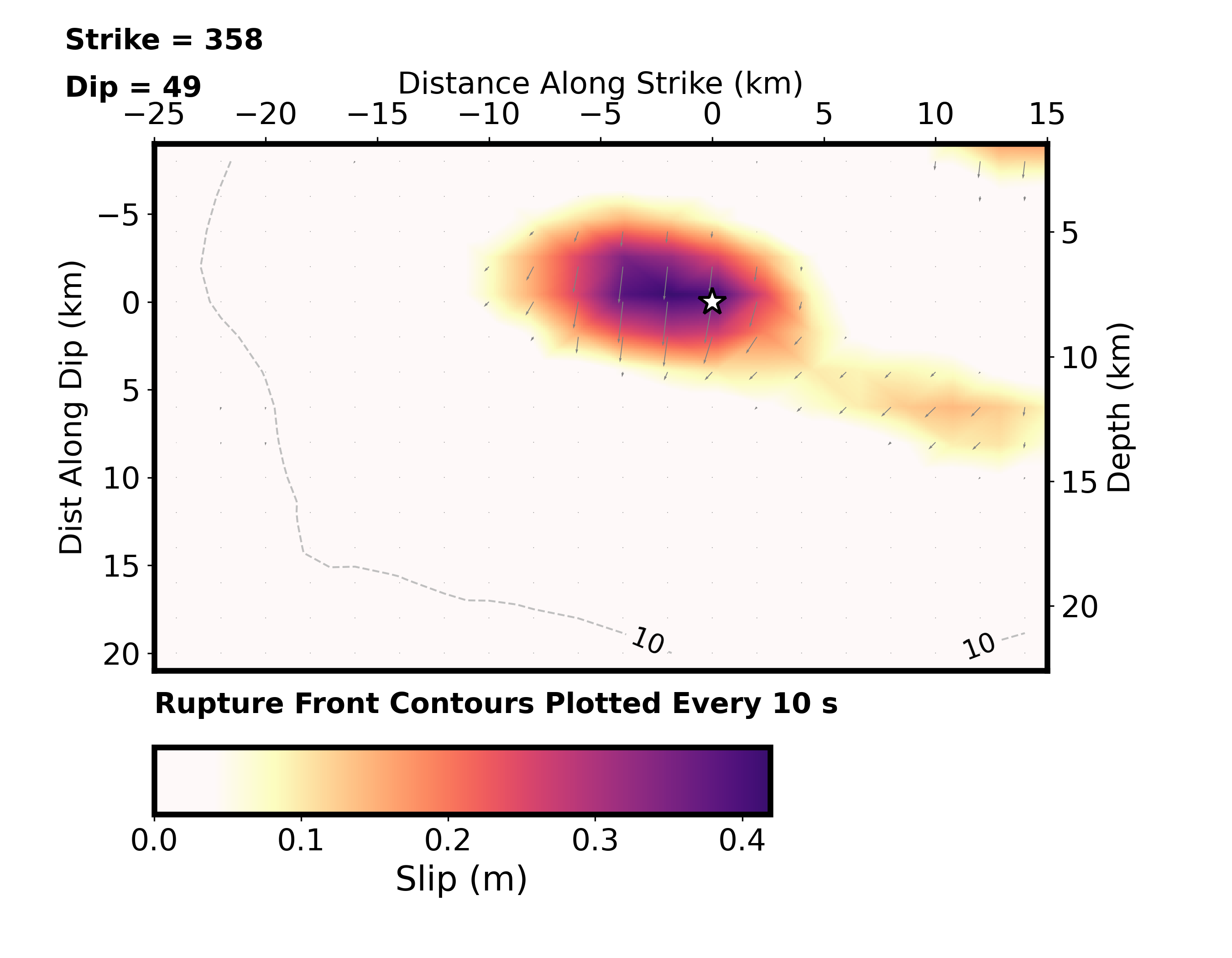M 6.0 - Antelope Valley, CA
- 2021-07-08 22:49:48 (UTC)
- 38.508°N 119.500°W
- 7.5 km depth
Finite Fault
- The data below are the most preferred data available
- The data below have been reviewed by a scientist
Scientific Analysis
This finite fault model includes analysis of both teleseismic and regional observations, including 16 teleseismic P-waves, 10 teleseismic SH-waves, and 4 long-period surface waves, selected based on data quality and azimuthal distribution. We also include observations from 20 regional strong-motion accelerometer sites (white triangles on the map below) and 22 regional GPS sites (vectors on the map below) from the Nevada Geodetic Laboratory MAGNET network (Blewitt et al., 2018). This result is based on the moment tensor nodal plane (strike = 358; dip = 49). The seismic moment release based upon this plane is 1.26e+18 N-m (Mw=6.0). The inversion uses a 1D crustal model interpolated from LITH1.0 (Pasyanos et al., 2014). All information in this Scientific Analysis supersedes the text below.
Data Process and Inversion
We analyzed 16 teleseismic broadband P waveforms, 11 broadband SH waveforms, and 10 long period surface waves selected based on data quality and azimuthal distribution. Waveforms are first converted to displacement by removing the instrument response and are then used to constrain the slip history using a finite fault inverse algorithm (Ji et al., 2002). We begin modeling using a hypocenter matching or adjusted slightly from the initial NEIC solution ( location = 38.5°N, 119.5°W; depth = 7.5 km ), and a fault plane defined using either the rapid W-Phase moment tensor (for near-real time solutions), or the gCMT moment tensor (for historic solutions).
Result
This result is based on the moment tensor nodal plane ( strike = 358.0°; dip = 49.0° ). The seismic moment release based upon this plane is 1.3e+18 N-m (Mw = 6.0) using a 1D crustal model interpolated from CRUST2.0 (Bassin et al., 2000).
Cross-section of Slip Distribution

Surface Projection

Moment Rate Function


